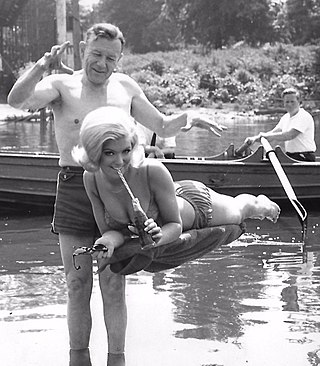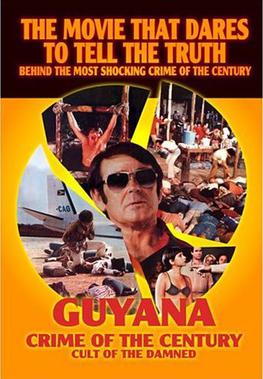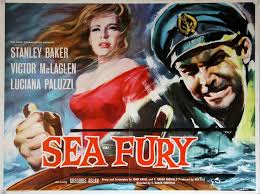Plot
A disparate and desperate group of plane crash survivors are thrust into a desolate mountainous desert region somewhere within present-day Namibia. Brian O'Brien – Stuart Whitman – is a big game hunter and the best survivalist of the group. Shortly after the plane crashes, stranding its passengers, he risks his life by re-entering the burning wreck and recovering vital supplies, including a hunting rifle; however, O'Brien's motives are far from noble. Thinking his own chances will be improved by the absence of competition, he ruthlessly seeks to eliminate his fellow survivors, one by one, intending to leave only Grace Monckton (Susannah York) alive, an "Eve" for his "Adam."
In addition to O'Brien's treachery, the survivors are menaced by a troop of chacma baboons inhabiting the area. Initially content to holler at the intruders from the distance, the animals gradually become more aggressive as they realize the people are only a physical threat to them when they have weapons.
Before O'Brien is able to bring his plan to fruition, one of the fellow survivors he had driven off into the desert at gun point (presumably to die of thirst) returns with a rescue party. The remaining survivors make their escape in a helicopter. O'Brien, aware he will be prosecuted for murder if he returns to civilization, chooses to remain behind.
With O'Brien the sole human in their domain, the baboons become more belligerent. At first he is able to keep them at bay with his rifle. When he runs out of ammunition, O'Brien brazenly challenges the alpha male to a fight and succeeds in killing him with his bare hands. In the film's final shot the remaining baboons encircle the lone hunter and ominously amble towards him.

George William Peppard was an American actor. He secured a major role as struggling writer Paul Varjak when he starred alongside Audrey Hepburn in Breakfast at Tiffany's (1961), and later portrayed a character based on Howard Hughes in The Carpetbaggers (1964). On television, he played the title role of millionaire insurance investigator and sleuth Thomas Banacek in the early-1970s mystery series Banacek. He played Col. John "Hannibal" Smith, the cigar-smoking leader of a renegade commando squad in the 1980s action television series The A-Team.

William Broderick Crawford was an American actor. He is best known for his portrayal of Willie Stark in the film All the King's Men (1949), which earned him an Academy Award and a Golden Globe Award. Often cast in tough-guy roles, he later achieved recognition for his starring role as Dan Mathews in the crime television series Highway Patrol (1955–1959).

Stuart Maxwell Whitman was an American actor, known for his lengthy career in film and television. Whitman was born in San Francisco and raised in New York until the age of 12, when his family relocated to Los Angeles. In 1948, Whitman was discharged from the Corps of Engineers in the U.S. Army and started to study acting and appear in plays. From 1951 to 1957, Whitman had a streak working in mostly bit parts in films, including When Worlds Collide (1951), The Day the Earth Stood Still (1951), Barbed Wire (1952) and The Man from the Alamo (1952). On television, Whitman guest-starred in series such as Dr. Christian, The Roy Rogers Show, and Death Valley Days, and also had a recurring role on Highway Patrol. Whitman's first lead role was in John H. Auer's Johnny Trouble (1957).

The Gods Must Be Crazy is a 1980 comedy film written, produced, edited and directed by Jamie Uys. An international co-production of South Africa and Botswana, it is the first film in The Gods Must Be Crazy series. Set in Southern Africa, the film stars Namibian San farmer Nǃxau ǂToma as Xi, a hunter-gatherer of the Kalahari Desert whose tribe discovers a glass Coca-Cola bottle dropped from an airplane, and believe it to be a gift from their gods. When Xi sets out to return the bottle to the gods, his journey becomes intertwined with that of a biologist, a newly hired village school teacher, and a band of guerrilla terrorists.

Jacobus Johannes Uys, better known as Jamie Uys, was a South African film director, best known for directing the 1980 comedy film The Gods Must Be Crazy and its 1989 sequel The Gods Must Be Crazy II. Uys also directed the 1974 documentary film Animals Are Beautiful People.

Cyril Raker Endfield was an American screenwriter, director, author, magician and inventor. Having been named as a Communist at a House Un-American Activities Committee hearing and subsequently blacklisted, he moved to the United Kingdom in 1953, where he spent the remainder of his career.

Robert Harbin was a British magician and author. He is noted as the inventor of a number of classic illusions, including the Zig Zag Girl. He also became an authority on origami.

The Skeleton Coast is the northern part of the Atlantic coast of Namibia and south of Angola from the Kunene River south to the Swakop River, although the name is sometimes used to describe the entire Namib Desert coast. The indigenous San people, of the Namibian interior called the region "The Land God Made in Anger", while Portuguese sailors once referred to it as "The Gates of Hell".

Zulu is a 1964 British epic war film depicting the Battle of Rorke's Drift between the British Army and the Zulus in January 1879, during the Anglo-Zulu War. It shows how 150 British soldiers, 30 of whom were sick and wounded patients in a field hospital, successfully held off a force of 4,000 Zulu warriors.

Zulu Dawn is a 1979 American adventure war film about the historical Battle of Isandlwana between British and Zulu forces in 1879 in South Africa. The screenplay was by Cy Endfield, from his book, and Anthony Storey. The film was directed by Douglas Hickox. The score was composed by Elmer Bernstein.

Sir William Stanley Baker was a Welsh actor and film producer. Known for his rugged appearance and intense, grounded screen persona, he was one of the top British male film stars of the late 1950s, and later a producer.

The Underworld Story is a 1950 American film noir crime film directed by Cy Endfield and starring Dan Duryea, Herbert Marshall, Gale Storm, Howard Da Silva and Michael O'Shea. Da Silva plays the loud-mouthed gangster Carl Durham, one of his last roles before becoming blacklisted.

Hell Drivers (1957) is a British film noir crime drama film directed by Cy Endfield and starring Stanley Baker, Herbert Lom, Peggy Cummins and Patrick McGoohan. The film was produced by the Rank Organisation and Aqua Film Productions. The film revolves around a recently released convict who takes a driver's job at a haulage company.

Rio Conchos is a 1964 American Cinemascope Western film directed by Gordon Douglas and starring Richard Boone, Stuart Whitman, Anthony Franciosa, Edmond O'Brien, and in his motion picture debut, Jim Brown, based on Clair Huffaker's novel "Guns of Rio Conchos" published in 1958.

Jet Storm is a 1959 British thriller film directed and co-written by Cy Endfield. Richard Attenborough stars with Stanley Baker, Hermione Baddeley and Diane Cilento. The film is a precursor to the later aviation disaster film genre such as Airport (1970).

Guyana: Crime of the Century is a 1979 English-language Mexican exploitation drama film written and directed by René Cardona Jr. The film, which was shot in Mexico, is based on the Jonestown Massacre. It stars a number of American actors such as Stuart Whitman, Gene Barry and Joseph Cotten. The names of central characters are slightly tweaked from the historical ones: the film is set in "Johnsontown" rather than Jonestown, the cult is led by "Reverend James Johnson" (Whitman) rather than Rev. Jim Warren Jones, and the murdered Congressman is "Lee O'Brien" (Barry) rather than Leo Ryan.

Sea Fury is a 1958 British action film directed by Cy Endfield and starring Stanley Baker, Victor McLaglen, Luciana Paluzzi and Grégoire Aslan.

Joe Palooka in the Big Fight is a 1949 comedy film directed by Cy Endfield, based on the comic strip by Ham Fisher. It is an entry in Monogram's Joe Palooka series.
William Patrick Mulvihill was an American author of several novels, most notable of which is the New York Times bestseller, The Sands of Kalahari, which was later adapted into the movie Sands of the Kalahari by Paramount in 1965.


















